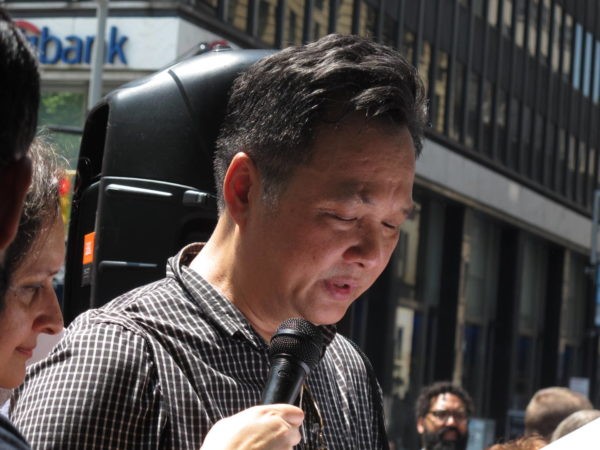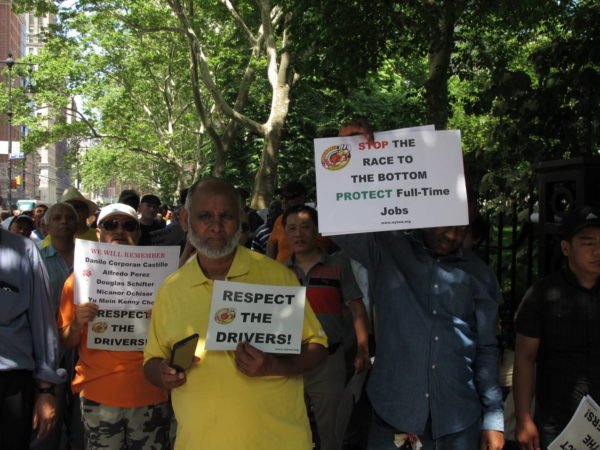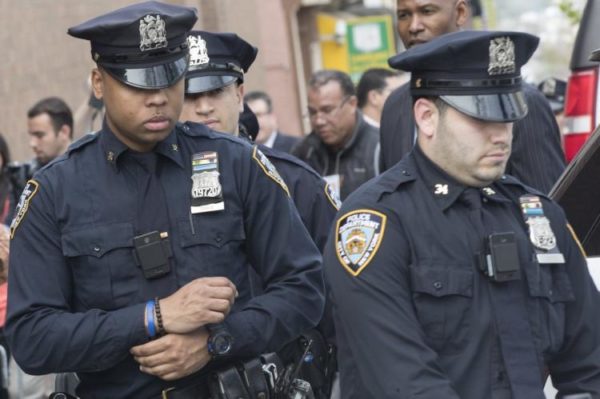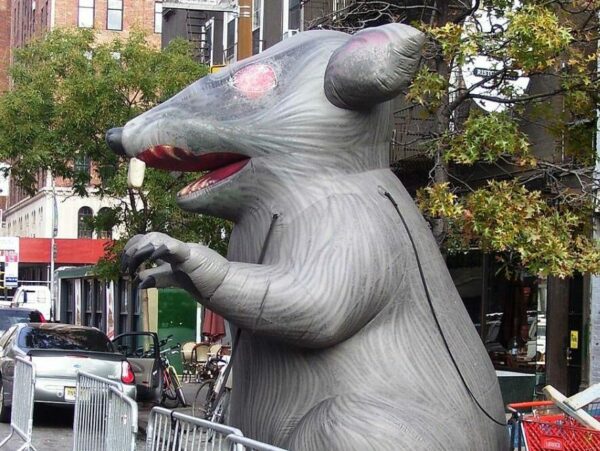NEW YORK, N.Y.—“Kenny faced hardship he was not able to control,” taxi driver Richard Chow said, fighting back tears as he addressed a rally of more than 100 drivers near City Hall May 29.

The rally came three days after the body of Yu Mein Kenny Chow, Richard’s younger brother, was found in the East River. Chow, 56, was the fifth taxi-industry driver to commit suicide in the last six months. More than $400,000 in debt on his medallion, he had been missing for more than two weeks, since he left his cab parked on an Upper East Side street a block away from the river.
“We have never seen this level of desperation,” Bhairavi Desai of the New York Taxi Workers Alliance told the rally. “If you can’t make ends meet after a 12-hour shift, what can you do?”
The math afflicting drivers throughout the industry is brutally simple. In 2011, before the arrival of app-based services such as Uber and Lyft, there were about 50,000 city-regulated for-hire vehicles—yellow, black, and livery cabs—on the streets, according to Taxi and Limousine Commission figures cited by Desai. Today, there are 130,000, about 70,000 affiliated with Uber, she says.
In 2011, according to TLC figures cited by City Councilmember Ruben Diaz (D-Bronx), the 13,587 yellow cabs averaged about 480,000 fares a day. That number has fallen by more than 40%, to slightly over 280,000.
That loss of market share has decimated both drivers’ incomes and the value of medallions. Like housing during the ’00s real-estate bubble, medallion prices inflated dramatically, reaching a record $1.3 million in 2014, and then plummeted. In April, 14 of the 20 medallions the TLC listed as being sold to non-family members went for less than $200,000, and 12 were in foreclosure. According to NYTWA, 80% of loans to owner-drivers are “under water,” the amount owed more than the medallion’s current value.
“We want justice now,” driver Mohammad Tipu Sultan of Brooklyn told the crowd, the drivers in a narrow police pen behind a thicket of TV cameras. “When will the City Council listen to us? When will the mayor listen to us?”
Seven bills to regulate app-based cabs are pending in the Council. Diaz’s Intro 838-A would put them under the same regulations as yellow, green, and black cabs,” he told LaborPress. It would require app-based services to have enough work to give each driver 10 trips per day in order to get or renew their license, and pay drivers for 10 trips if there isn’t. It would also regulate fees those companies charge drivers, and drivers would have to pay a $400 fee to get a two-year license.
Into 144, sponsored by Councilmember Stephen Levin (D-Brooklyn) would curb the number of new cabs a for-hire vehicle “base” could get licenses for, pending the results of a TLC study on growth in the taxicab and for-hire vehicle industries. Councilmember Brad Lander (D-Brooklyn) is preparing a bill that would allow the TLC to set minimum fares for for-hire vehicles, and require companies to pay drivers minimum wage or the average hourly income of yellow-taxi drivers, whichever is greater.

None of these bills would lower the number of cabs on the street, which has been NYTWA’s main demand. “We’re working on that,” says Diaz. He expects Council Speaker Corey Johnson to come up with a compromise that consolidates the bills.
NYTWA’s other proposals include setting the fare for yellow and green cabs as the industry minimum, to prevent companies from cutting drivers’ income by undercutting competitors’ fares; limiting app-company commissions to 20% of the fare; and a program to help yellow-cab medallion owner-drivers avoid foreclosures and bankruptcies.
The Independent Drivers Guild, an International Association of Machinists affiliate that advocates for Uber drivers, strongly opposes both a cap on the number of vehicles and the 10-trip minimum in the Diaz bill, saying it “practically guarantees that apps will lay off thousands of drivers,” charge drivers a fee for using the app, or set minimum shift lengths.
Uber drivers, the IDG said in a statement, average less than 7 trips per day, while Lyft drivers average four and Juno drivers three. Uber, it adds, has only enough demand to give 10 trips per day to 40,000 of its more than 60,000 drivers, and “for Lyft and Juno, it’s even worse.”
Instead, it’s advocating a cap on the number of drivers rather than on the number of vehicles, saying that would provide “value to workers while taking the power away from the companies.”
That would help Uber more than it would help drivers, Desai responds. About 180,000 people now have licenses to drive for-hire vehicles, she told LaborPress, so even if that number was capped, there could still be 50,000 more vehicles on the streets. Uber’s business model is predicated on part-time work, she contends, in which drivers work only “the best hours, rush hours and weekend nights”—the hours that full-time drivers need to do well in to make a living.
That would help Uber more than it would help drivers, Desai responds. About 180,000 people now have licenses to drive for-hire vehicles, she told LaborPress, so even if that number was capped, there could still be 50,000 more vehicles on the streets.
“The main thing is you protect full-time work,” Desai says.
Both NYTWA and the IDG opposed a provision deleted from the Diaz bill that would have limited drivers to working for one app company.
Taxi drivers’ slide from a solid job to poverty pay, Desai told the crowd, began in the 1980s, when fleet drivers were switched from employees getting a percentage of the meter plus tips to independent contractors leasing the cab. They were among the first victims of the “gig economy,” she added, losing their rights to a minimum wage and a union “overnight.” More recently, she continued, Uber has gotten laws passed in more than half of states that declare app-based workers independent contractors not subject to labor law.
“In the name of technology, they’re destroying labor protections for hundreds of thousands of workers,” she said.
“I believe we have failed you,” City Councilmember Jumaane Williams (D-Brooklyn) said as the rally ended. In hindsight, he told the drivers, the city should not have allowed a new type of cab to enter the industry while taxi drivers were paying off hefty mortgages for medallions.



